VISUAL ESSAY
Florence House: Dignity for several hundred Joburg residents as squalid Hillbrow building is rescued
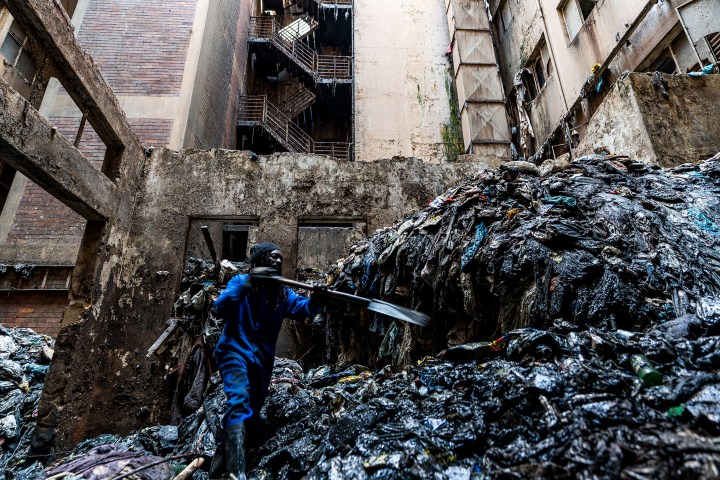
‘The building, when I walked into it, was not a place where I would want any human being to be staying in.’
Residents of Florence House, previously the Florence Nightingale Hospital, in Hillbrow, Johannesburg, lived in squalor for many years. Dirt, danger and a lack of basic services became a way of life for about 600 people occupying the seven-storey building, which also houses an orphanage caring for between 150 and 200 children.
The building was recently rescued, and its residents are being given back their dignity.
Skye Burgess, co-founder of NPO The People SA, which initiated the transformation, told Daily Maverick, “This building was owned by a trust. It was bought in the year 2000. It was actually used for displaced persons, as well as more of a social project. They [the trustees] did the upkeep, fixed the windows, did all the cleaning, provided security.
“Everything was fine up until 2016. When the main member of the trust died, another member immigrated and the third could not be found. If a trust can’t be renewed within three years of a member dying, it dissolves. So at the moment, the building has not been reclaimed, it is owned by a non-existent trust.”
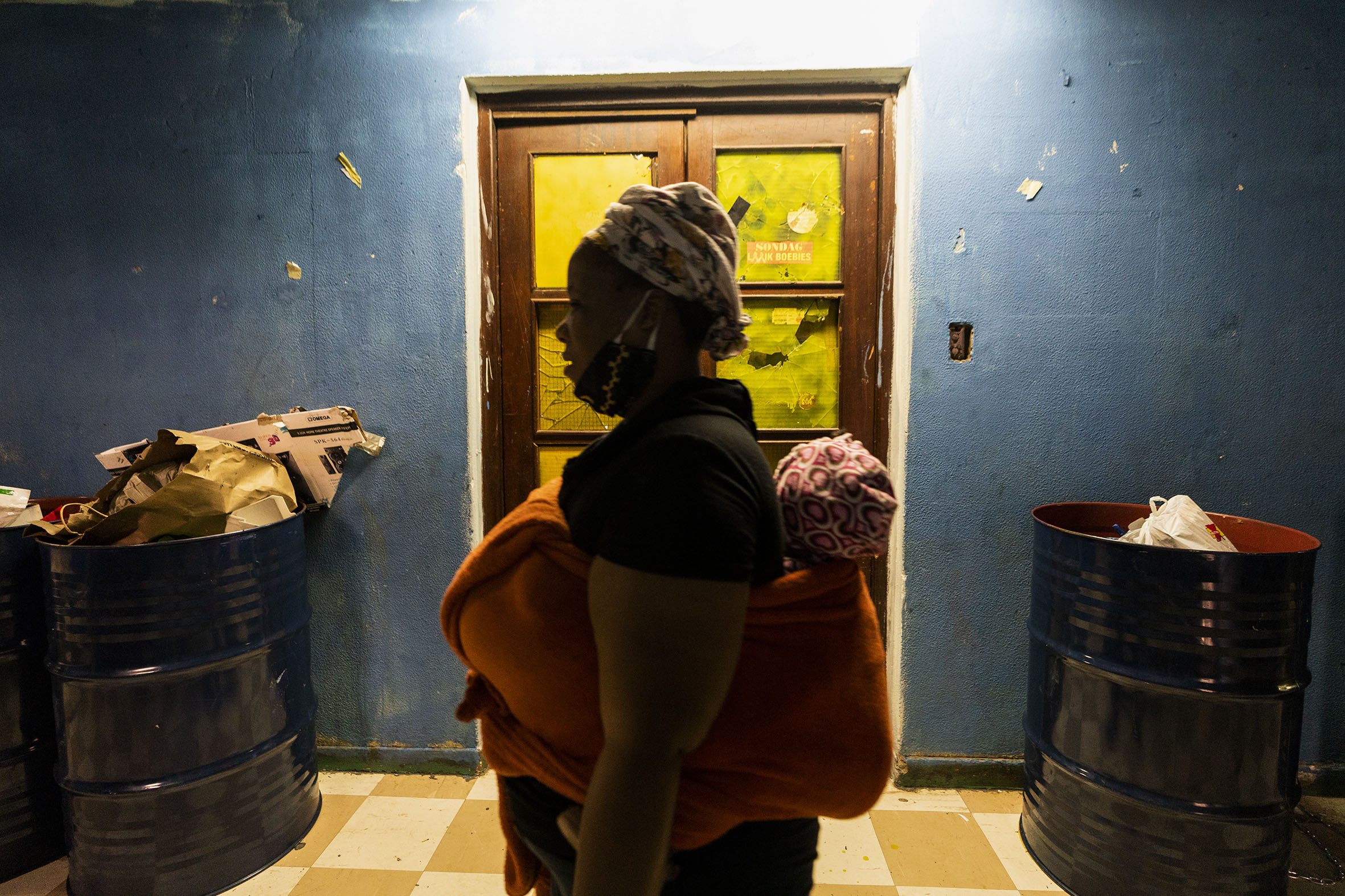
A woman walks past old oil drums that have been placed on each floor of the seven-storey building to dispose of rubbish. (Photo: Shiraaz Mohamed)
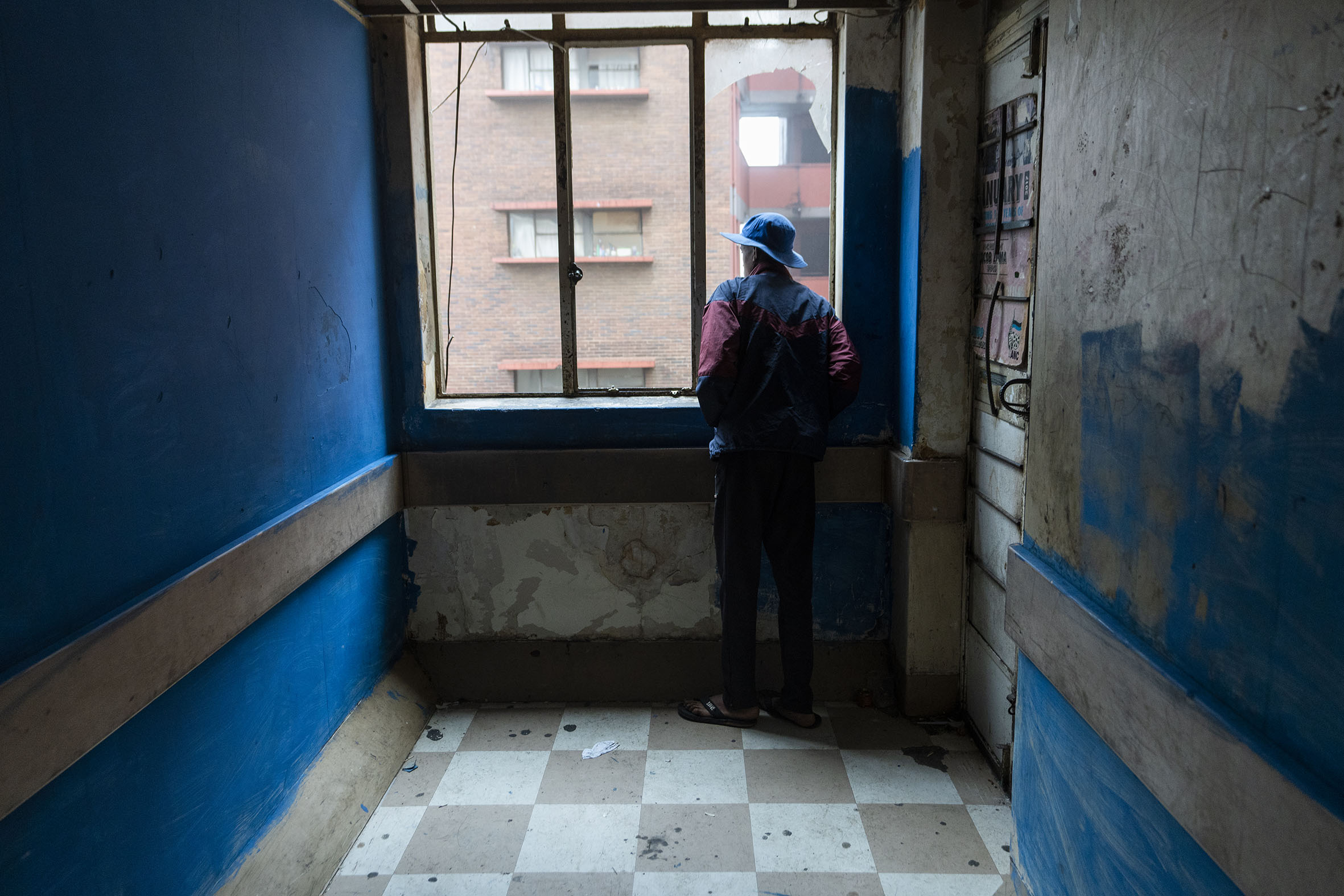
A man looks out the window as workers conduct their cleaning campaign down below. (Photo: Shiraaz Mohamed)
The absence of caretakers resulted in the building becoming decrepit, without a drainage system or a supply of water. It was overcrowded and was filled with the stench from garbage. Raw sewage, sanitary pads and nappies were a common sight. People would relieve themselves in buckets and dispose of the contents in the dysfunctional drains.
Move One Million’s Charles Barrell, who assisted with the removal of the rubbish, said: “The building, when I walked into it, was not a place where I would want any human being to be staying in. It was absolutely disgusting.”
Move One Million and The People SA, together with the residents, began cleaning the building, fixing windows and floors and removing the garbage as the building’s rehabilitation process began. Pikitup provided five 10-ton trucks daily to remove the waste, and to date around 500 tonnes of waste have been cleared.
Joshua de Villiers of The People SA said, “Essentially we want to basically rescue this building, this is a historical landmark. I was shocked at the condition. Shocked as to what… was going on in this place. So then we just started getting involved. But then we realised, you can throw as many mealies and as much clothes as you can into the situation, but it’s not going to make their living conditions better. We realised we had to go more structural if we wanted to change things, because they are never going to kick these people out.”
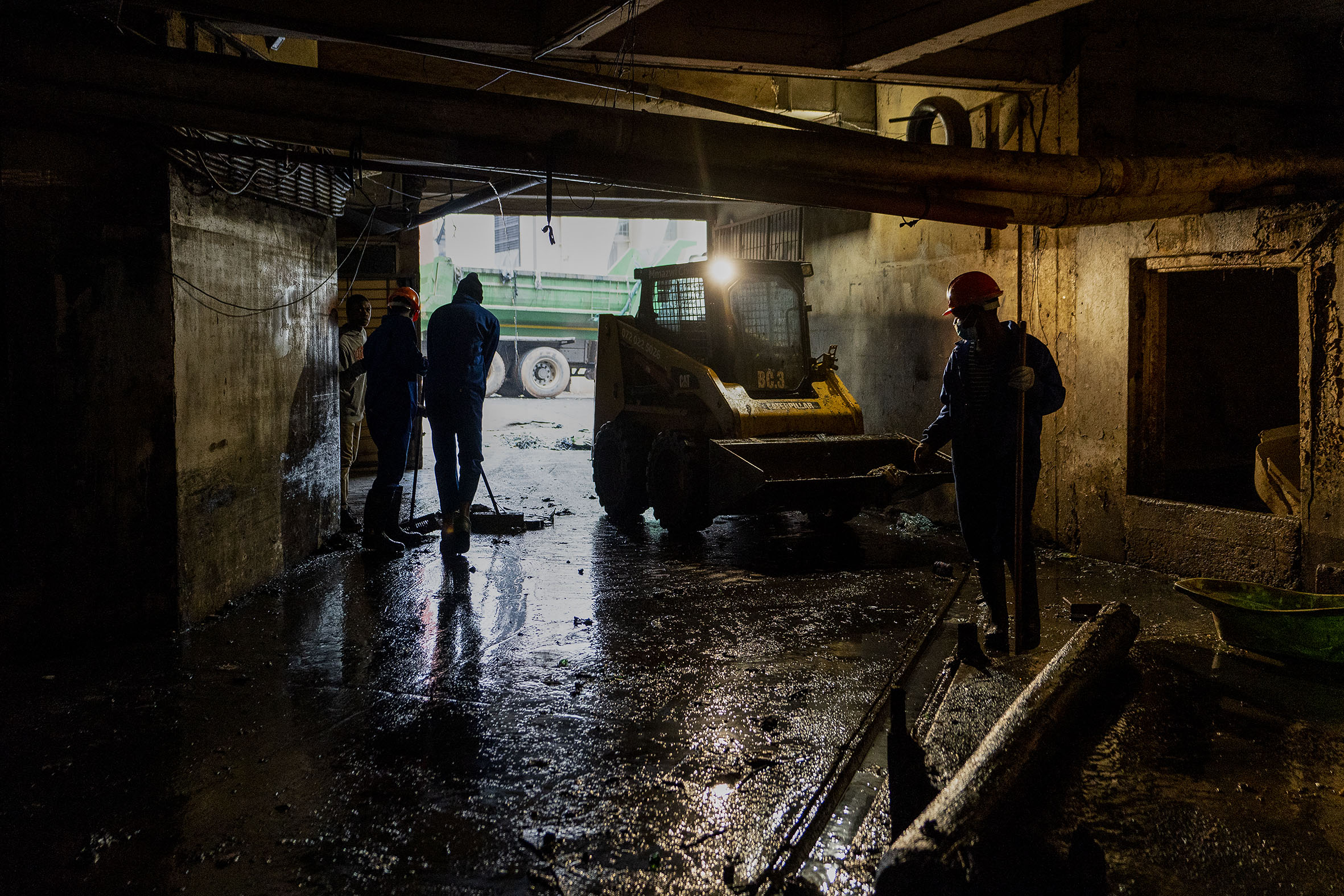
Residents who formed part of the clean-up team sweep away flooded sewage water. (Photo: Shiraaz Mohamed)
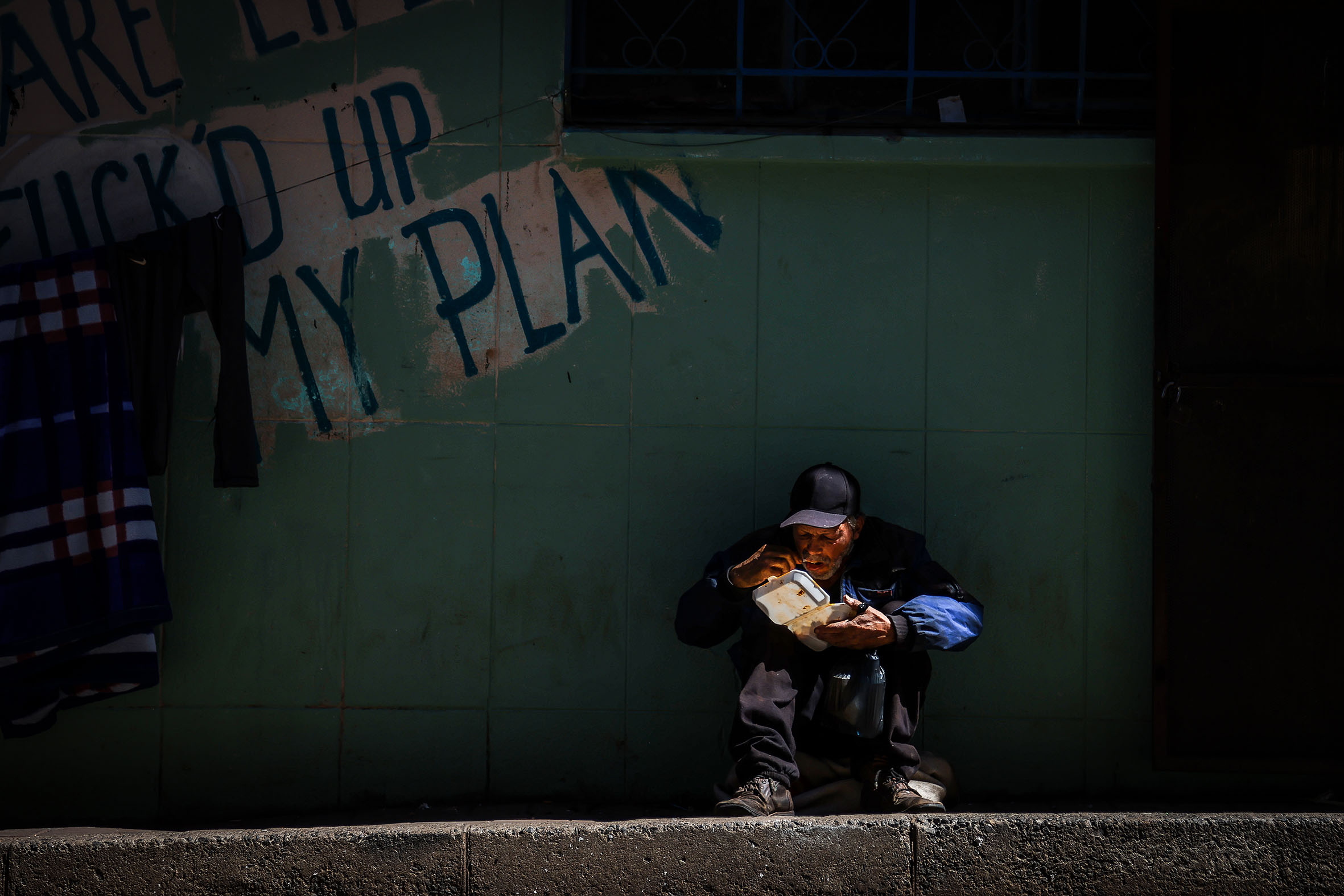
A homeless man sits outside Florence House eating a meal that was donated to him. (Photo: Shiraaz Mohamed)
Resident Micheal Kunene welcomed the changes and said, “We [him and his wife] have been living here for 10 years. The condition was very bad. The smell was terrible, there were lots of mosquitoes, not to mention the rats. There were too many rats. They are not scared of us, they run straight toward you as if to jump on you.
“Things are better now. It’s clean now. It’s nice to live in a building that’s clean.”
Another resident, known only as Rasta, (who was also part of the clean-up team), lives on the ground floor and had to place his bed on crates to avoid getting wet from water that flooded his floor because there was no drainage system.
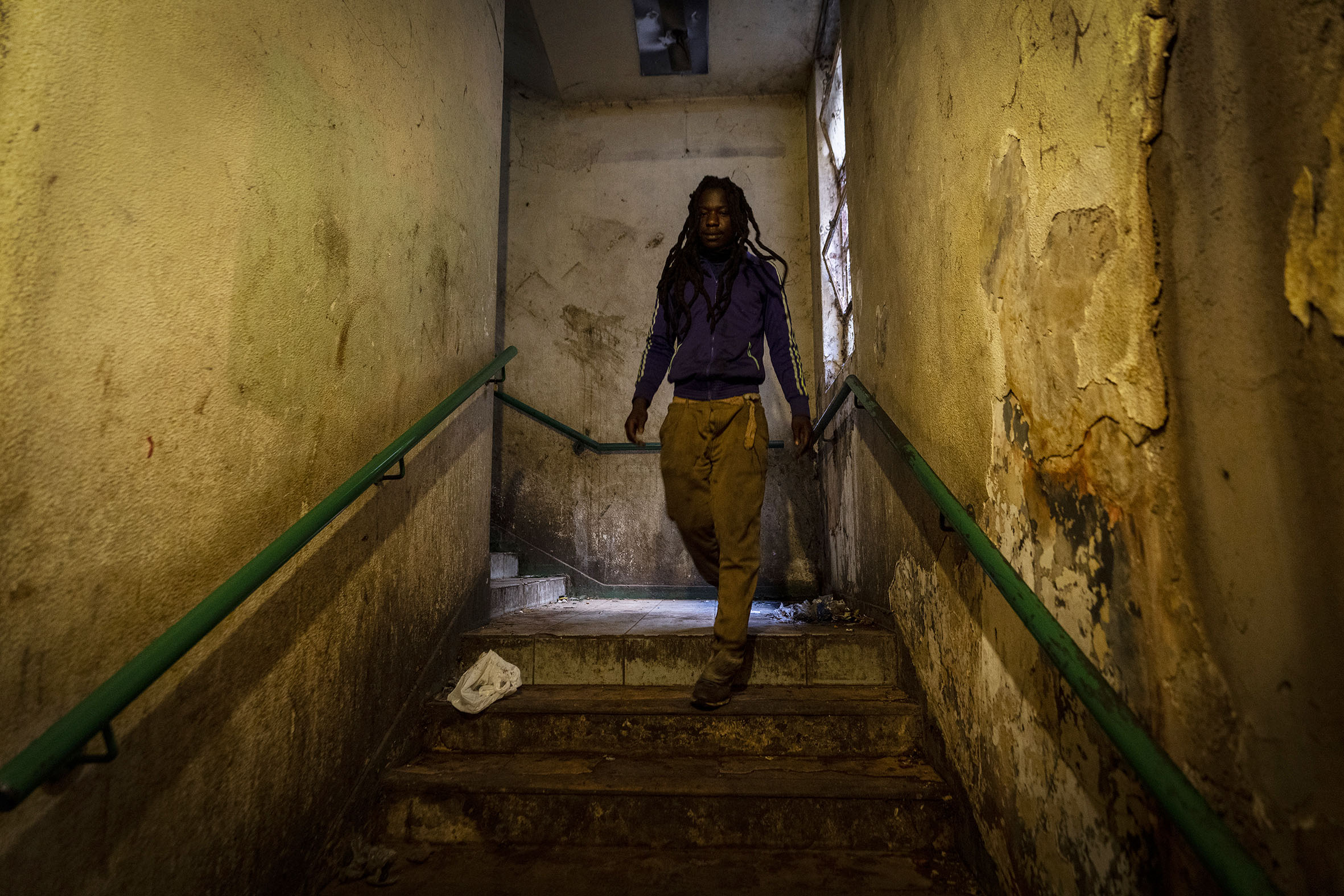
Rasta (last name unknown) walks down a stair case as he makes his way to his room.
(Photo: Shiraaz Mohamed)
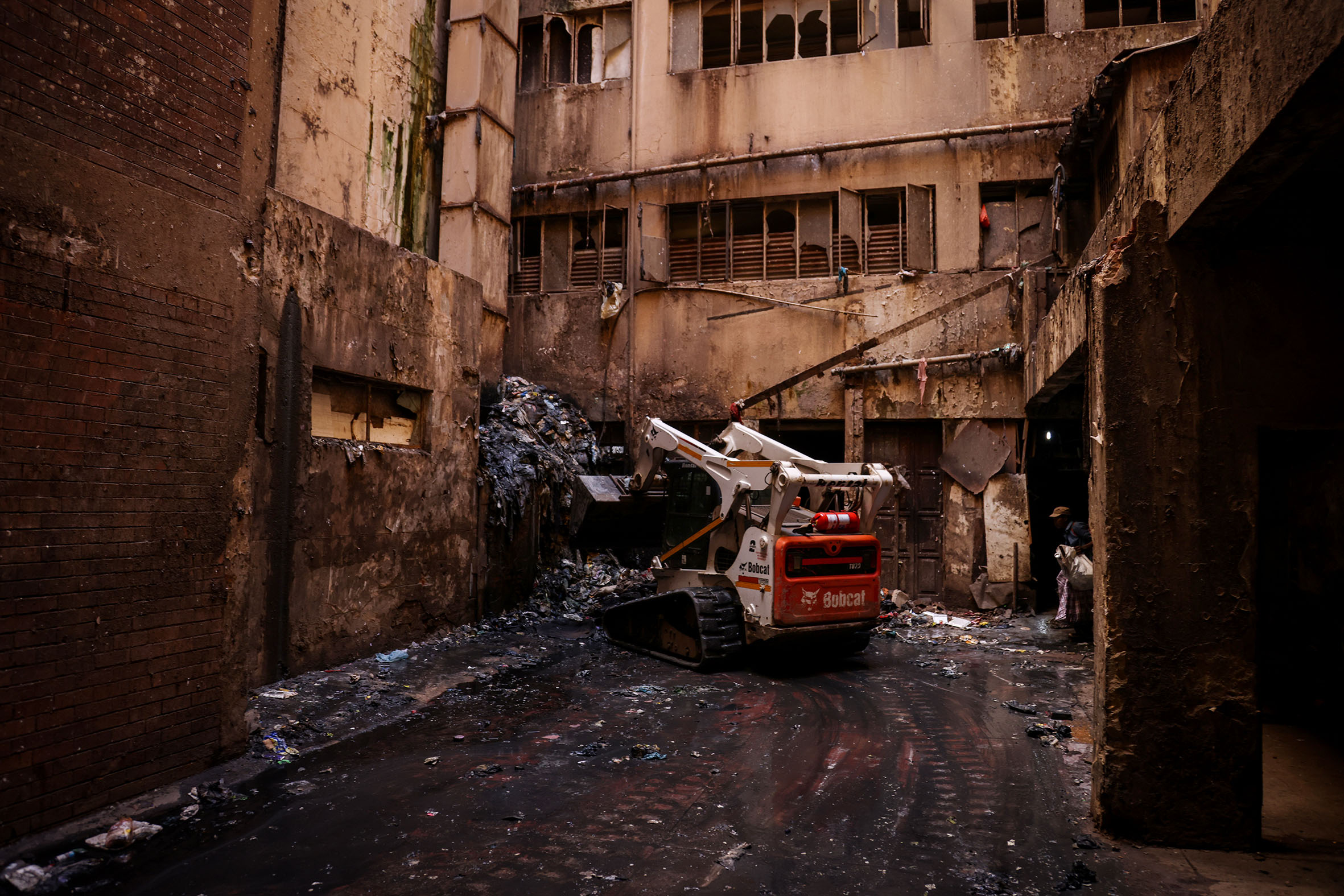
A bobcat clearing the rubbish. To date around 600 tonnes of rubbish have been removed. (Photo: Shiraaz Mohamed)
“There was too much water in my room. People from upstairs would throw the water down here and there was no place for the water to run out. I put my bed on crates so that I could sleep properly. When they started cleaning I begged them to help us with the water. The water is gone now and things are better.”
Plans are under way to have the plumbing, electricity and water supply restored. Residents are being educated about basic hygiene and the disposing of refuse. Old oil drums have been placed on each floor of the building for rubbish, and inhabitants have been appointed to collect the garbage and take it to a central point.
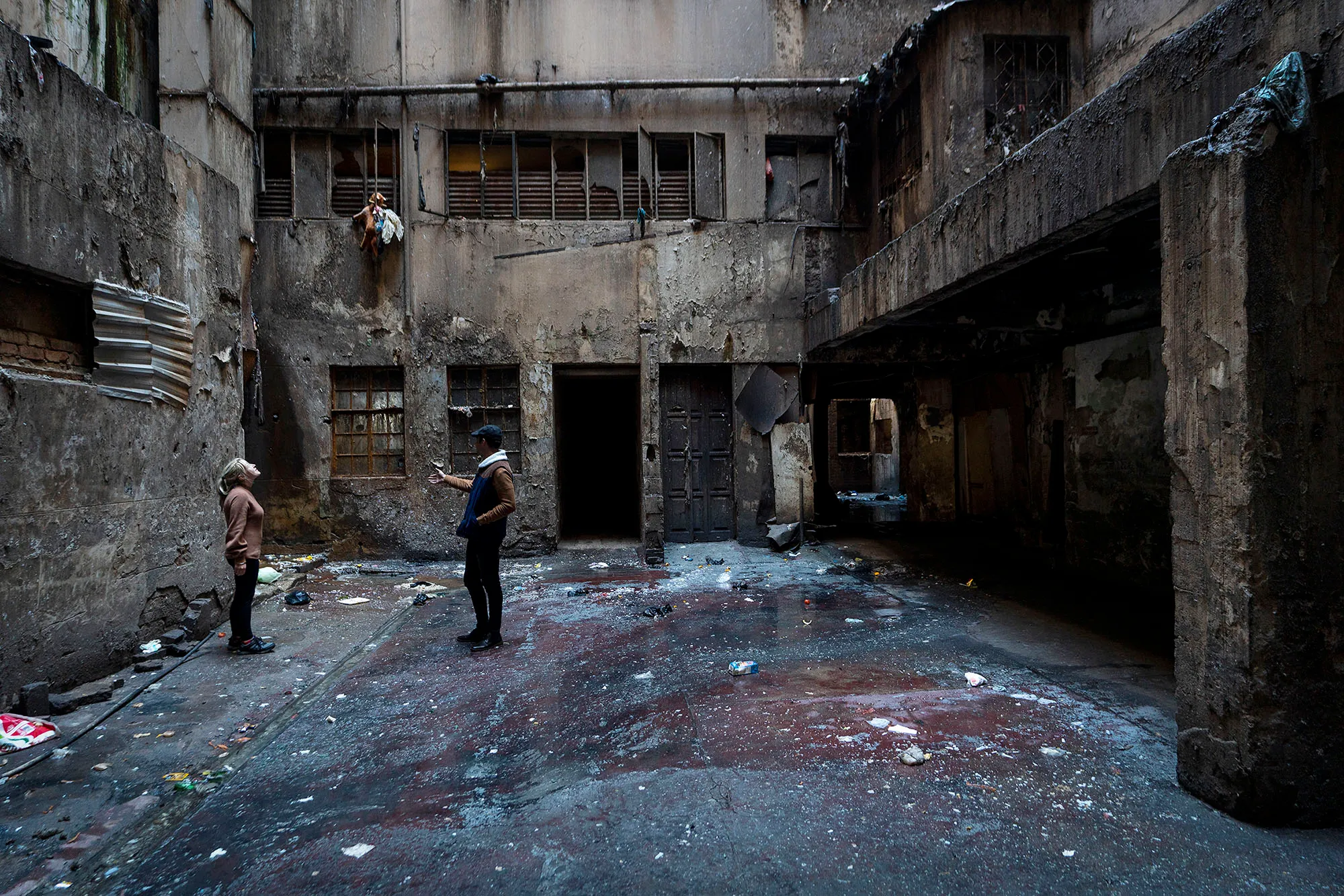
We the People founders Joshua De Villers (R) and Skye Burgess (L) standing in the basement after hundreds of tons of rubbish were removed. Photo / Shiraaz Mohamed
Long-term plans for the building include a recycling station, rooftop garden, renovating the orphanage, job creation for residents, repainting the building and setting up a building council for long-term sustainability and community upliftment.
“It’s about giving people back their dignity and their pride,” said Barrell.
DM

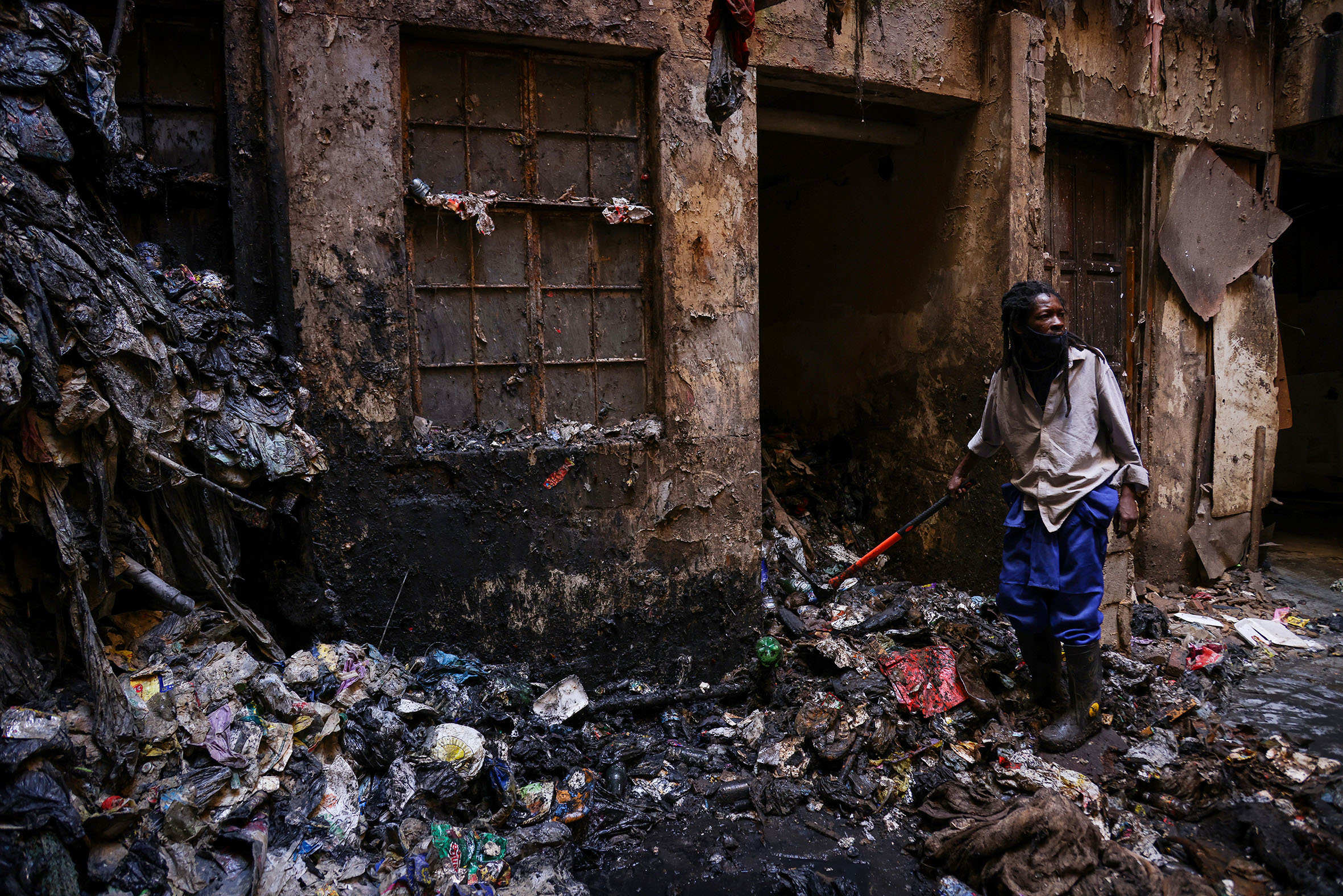
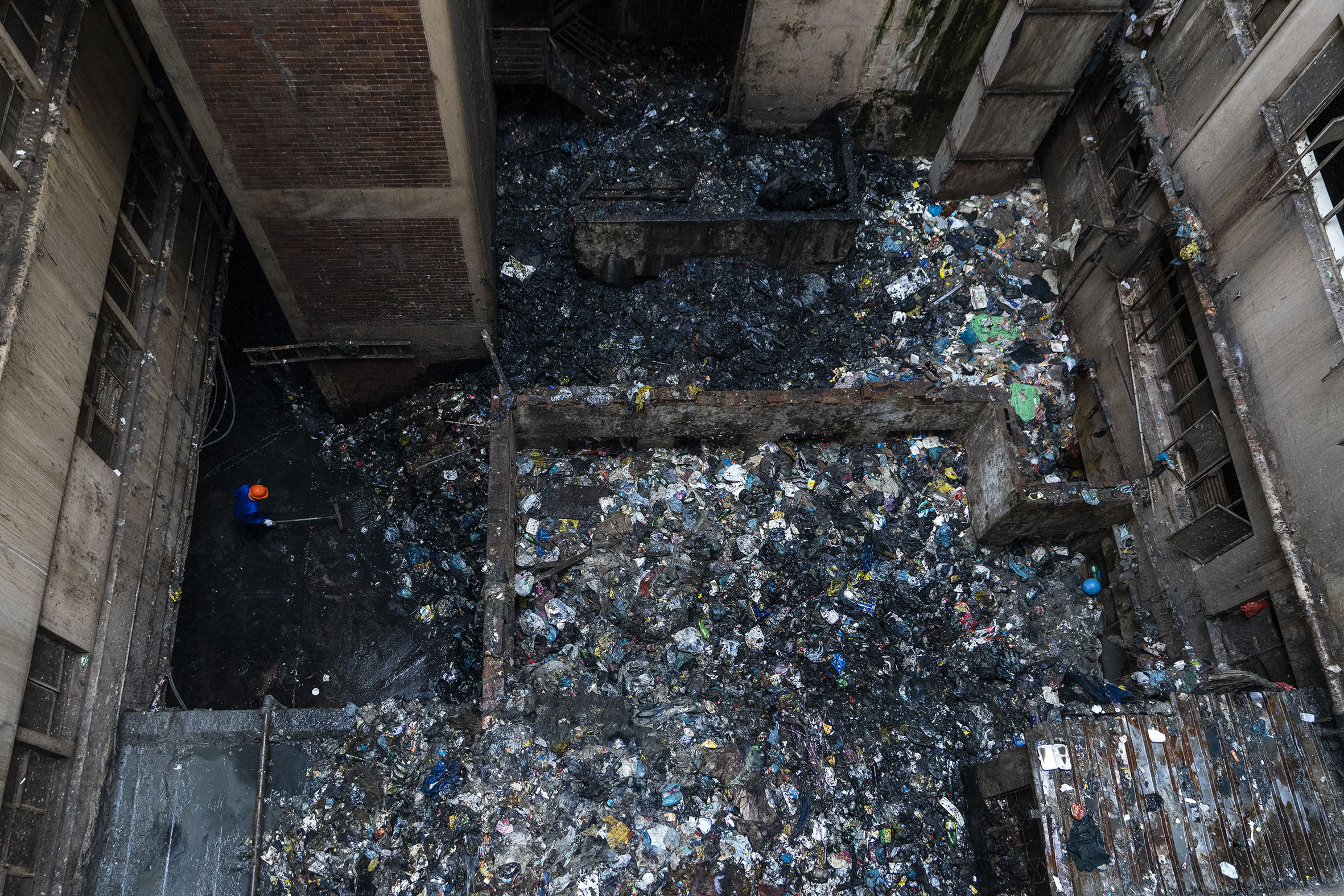
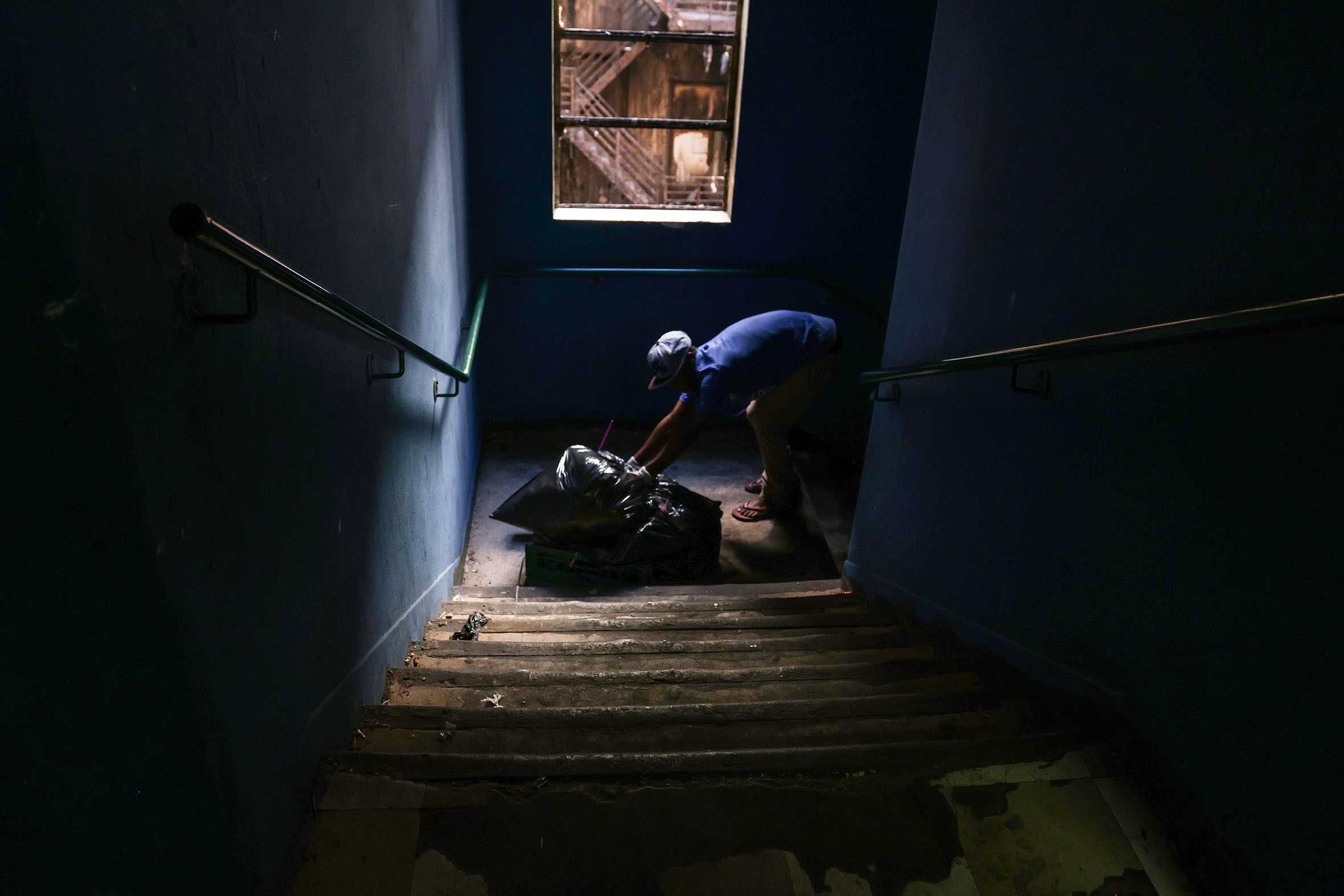
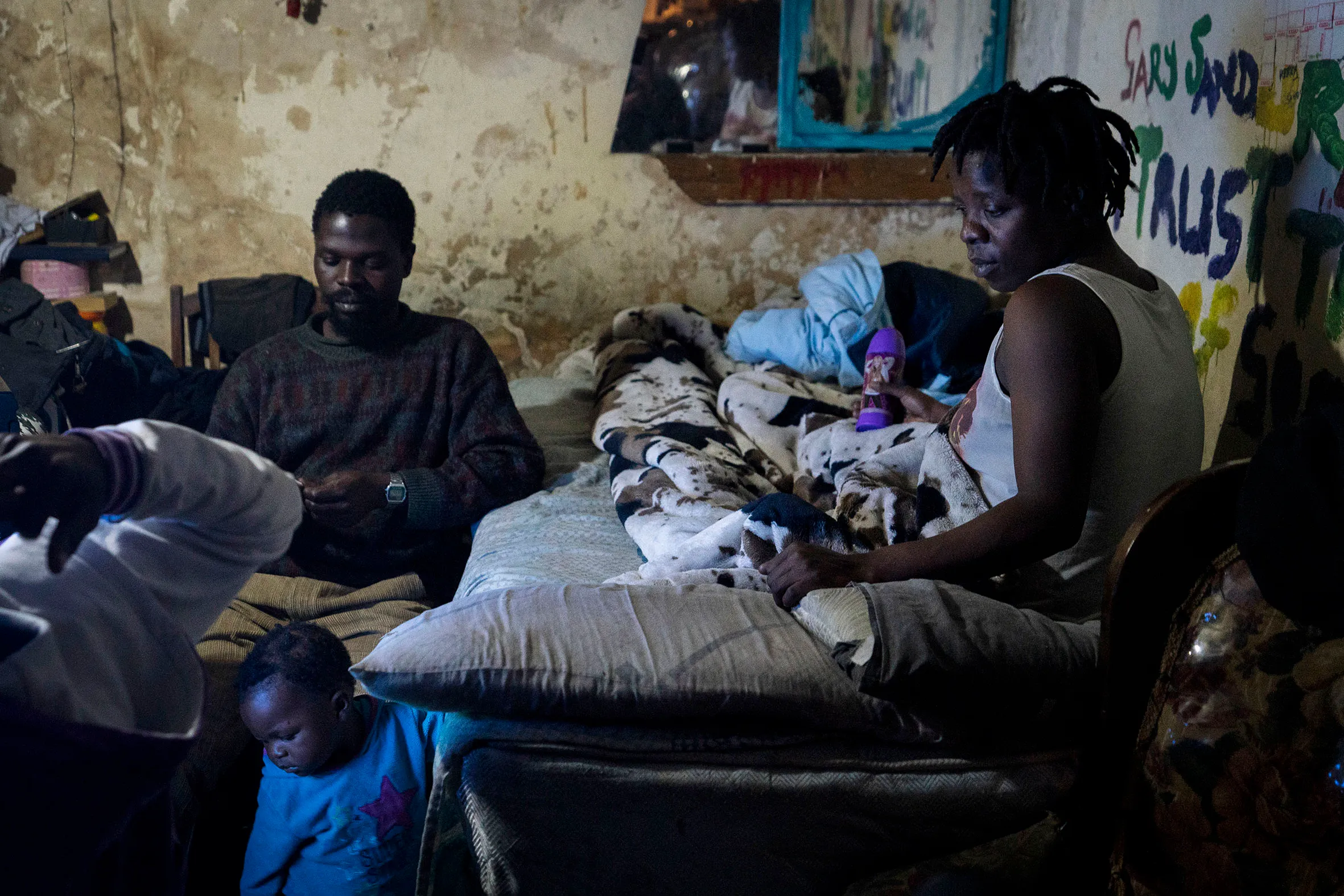



















 Become an Insider
Become an Insider
Why did the people living in the building not take on the caring for it? Can dignity be given? Surely Dignity is inherent within each individual….. Cleanliness, order, responsibility, dignity are all available to those with free will. Giving human beings something for nothing, with no expectations does not constitute “ dignity” in my language – it’s merely yet another handout that disempowers the receiver.
Birth control and education would help these people find the dignity within themselves….that would be a meaningful start.
I’m sorry to say this but this building will look exactly the same in a few months, what a waste of effort and time.
Thanks for all your hard work writing that cynical reply. Stay in your home, help no one else and complain all you like but please don’t come here and the bed: these indigent people couldn’t possibly remove 500 tonnes of waste themselves on no budget. Your opinion is shallow to the point of indifference. Please try be better?
your criticism of Jane’s response is only partly relevant. The 500 tonnes of waste should never have been there in the first place. While it’s wonderful that these people are being assisted, handouts don’t bring or restore dignity in the long term. remember the story about teaching someone to fish??
Exactly Wilhelm. The garbage should never have been there in the first place. That is the dignity that Jane is referring to that seems to totally lack with these ‘residents’. (Wonder how much rent they pay?)
So… the other people with no homes who moved in after the garbage accrued: they should also, “not be there”. Please take a good long look at how your replies represent the opposite of progress. You’re saying ‘leave it’? What?
Most often it takes an outside intervention to provide the leadership and impetus to begin a project like this. I’d like to think that these residents have now seen how easy it is to keep their environment clean and will do it for themselves. I’d say that that is giving the residence the capacity to do things for themselves is part of the process of regaining dignity. Well done to start who kick started this project.
I have found that people, when given an opportunity, can very often rise to the challenge and take ownership and make dramatic recoveries. Until you have been on the brink of death, starving, how will you know what it feels like? Whether this project succeeds or fails, it has taken courage and compassion to attempt it. I wish everyone involved huge success.
Thank you for this lovely story of hope and kindness.
I was surprised by some of the negative comments but remind myself that it’s better those sorts are here, reading liberal and inclusive stories that maybe influence them just a little to be nicer human beings.
How much harder it must be to actually organise the removal of hundreds of tons of rubbish to typing on a keyboard to criticise and advise on the project… Yes, there’s lots to be done still, yes people should take ownership for their surroundings, yes we should all have dignity and self-respect, yes we should pay as we go …. one step at a time folks!
Respect for those who took the initiative in this project!
What a noble undertaking. How wonderful to see the residents of the building being part of the cleanup. How utterly demoralising it must have been to have nowhere else to go, and not to have the means or the emotional energy to even start changing things for the better. Thank you, Skye Burgess, The People SA, and all the other altruistic and generous people involved. The world is a better place with you around. I salute you.
To think this was my first port of call when taken acutely ill 35 years ago, then an excellent private hospital with one of the the first MRI scanners in the country, to my recollection. I am glad there is a plan in place. However it also goes to a greater issue. Walking down Rivonia Road every day, north of the Sandton City enclave, I am appalled by the daily accumulation of plastic bags, bottles, containers often with half-eaten food, discarded masks, etc, littering the verges. Dumped by pedestrians or thrown out of moving taxis. There are, of course, concrete bins every few hundred metres but it’s just too much trouble. Littering is just another national pastime.